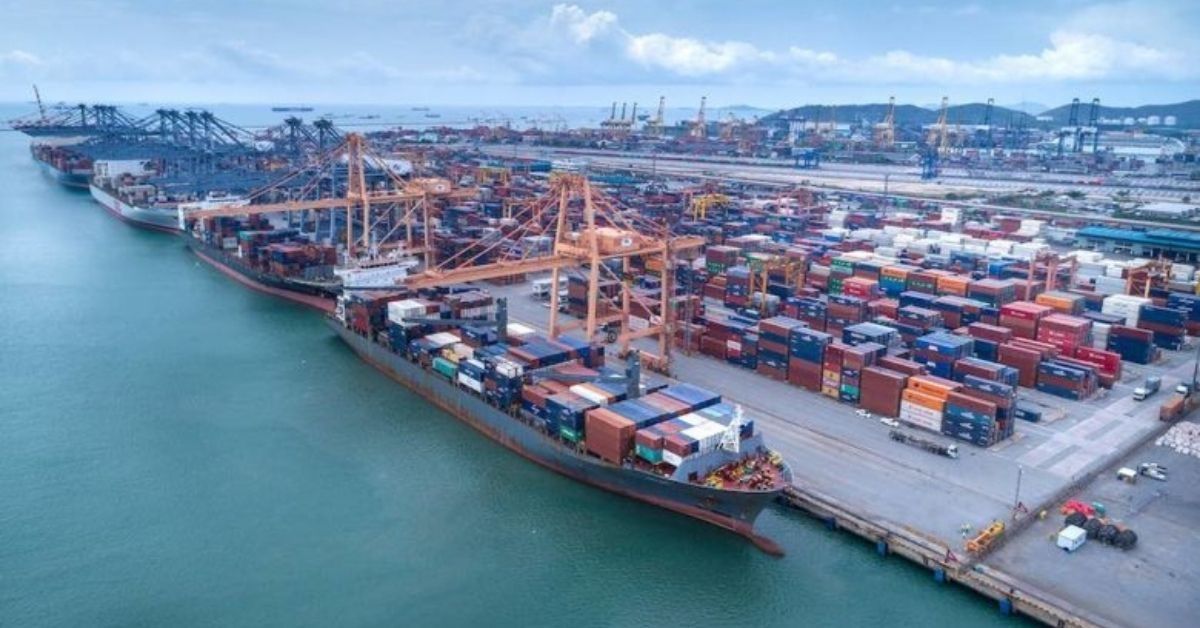Container services covering the intra-Asia and Africa markets have been ditched in dramatic fashion over the past year as global liners focus on the two main east-west tradelanes.
Alphaliner data published this week shows 43.7% of the total box fleet is now trading on the transpacific and Asia-Europe, the two biggest east-west trades, up from 38.1% year-on-year.
At the start of this year, 22% of the total cellular fleet was deployed between Asia and North America, up from 17.5% on January 1 2021. Carriers added 1.3m teu of capacity onto the transpacific, a “staggering” 31.2% increase, Alphaliner reported in its latest weekly report.
“The capacity increase was needed to compensate the huge efficiency loss as many ships faced long waiting times at anchorages,” Alphaliner explained with ports on the US west coast battling record queues over the past year.
Carriers added 31.2% extra capacity onto the transpacific last year
The capacity in the Asia – Europe trade last year increased by 10.2%, largely due to the delivery of 16,000 to 24,000 teu newbuildings replacing 13,000 teu units. Nowadays 21.7% of the cellular fleet is deployed there, up from 20.6% on January 1 2021, according to Alphaliner data.
As liners repositioned ships, the two big losers were intra-Asia and Africa. The intra-Asian trade was the worst hit as several Chinese carriers switched tonnage to the transpacific trade, while other lines have been chartering small or medium sized tonnage previously deployed within Asia for ad hoc sailings to the US.
Some 331,200 teu slots were removed from intra-Asian services last year, a 10.8% drop. 11% of the cellular fleet is now active in intra-Asia, down from 12.8% at the beginning of last year.
Meanwhile, the combined capacity of ships trading between Asia, Europe or America and Africa decreased by 6.4% last year to 1.68m teu. This represents 6.7% of the total cellular fleet, down from 7.5% at the beginning of last year.
Global liners moving more ships to the booming main east-test tradelanes at the expense of places such as Africa has been a recurrent theme during the pandemic.
Olaf Merk, project manager for ports and shipping at the International Transport Forum (ITF) of the Organisation for Economic Co-operation and Development (OECD), interviewed by Splash last year, questioned whether regulators ought to be looking into this shift in global coverage.
“This seems to have become the current reality of global liner shipping: alliances and consortia continuously shift capacities between tradelanes to adapt to changes in demand even if there are no real changes in demand,” Merk said, adding: “And so it can happen that shippers in one continent suddenly have less capacity to their disposal due to a capacity shift to other parts of the world, even if they need more capacity. This dynamic – often coordinated via alliances and consortia – obviously can have impacts on freight rates.”
Consultantcy Drewry is predicting container shipping will notch up a combined EBIT of $200bn this year, up from its revised 2021 total of $190bn.
Source : Splash24/7







